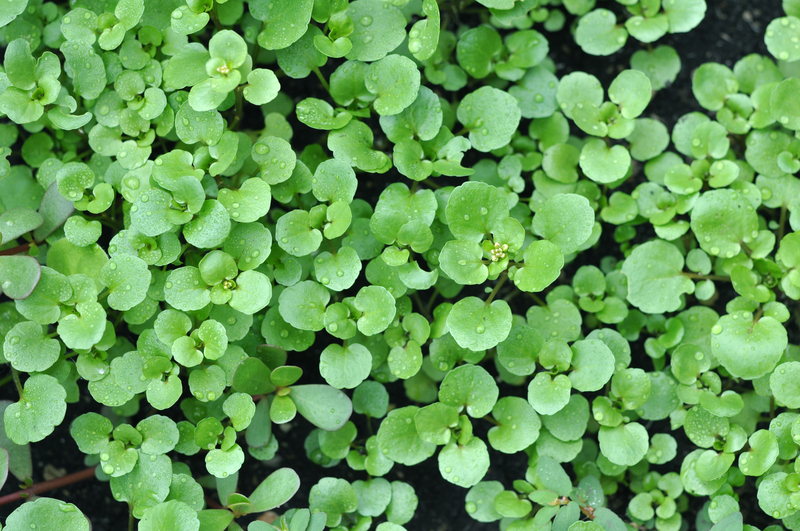Curating a Wonderland: Gardens Built for Children
Posted on 18/08/2025
Curating a Wonderland: Gardens Built for Children
Every child dreams of a magical place--a kingdom where imagination rules, discovery never ends, and adventure lurks in every corner. Curating a wonderland with gardens built for children goes beyond simple landscaping. It creates a vibrant, interactive outdoor haven where kids can play, learn, and grow. For families, educators, and landscape enthusiasts, understanding how to design such magical gardens for children is the first step toward nurturing wonder, curiosity, and a lifelong love for nature.
Why Create Gardens for Children?
Building gardens tailored to children's interests isn't just about aesthetics. It's a path to holistic development. Children's gardens stimulate all the senses, give children freedom to play safely, and offer endless learning experiences. Let's dive into the core reasons for curating a wonderland for children through thoughtful garden design:
- Encourages Physical Activity: Outdoor play increases movement, helping develop motor skills and coordination.
- Stimulates Imagination: The ever-changing outdoor environment fuels creativity and storytelling.
- Fosters Environmental Stewardship: Through hands-on gardening, children gain understanding of plants, animals, weather, and eco-systems.
- Promotes Social Interaction: Collaborative gardens build teamwork, communication, and friendships.
- Supports Mental Health: Nature reduces stress, increases focus, and enhances emotional well-being.

Principles of Designing a Children's Garden
Curating a magical garden for children involves more than planting colorful flowers. It is about designing an engaging, interactive, and safe environment. Here are the key principles to consider:
1. Safety First
- Use non-toxic, thornless plants and avoid poisonous species.
- Incorporate safe pathways with soft surfaces like grass, mulch, or bark.
- Ensure all equipment, such as swings or slides, meets safety standards.
2. Accessibility for All
- Design wide, smooth paths for strollers and wheelchairs.
- Include raised beds for easier access.
3. Engage Every Sense
- Sight: Use vibrant flowers and dramatic foliage colors.
- Touch: Plant a variety of textures--from soft lamb's ear to rough tree bark.
- Smell: Incorporate herbs and scented flowers like lavender and mint.
- Sound: Add wind chimes, rustling grasses, and water features.
- Taste: Grow safe, edible plants such as berries, peas, and cherry tomatoes.
4. Create Zones for Play and Exploration
- Include open lawns for running and games.
- Install themed play areas--like a fairy garden or pirate cove.
- Design quiet corners for reading or nature watching.
5. Encourage Hands-On Learning
- Provide garden beds for planting and harvesting.
- Add educational signage about plants and wildlife.
- Host workshops or interactive garden events.
Key Features of a Children's Wonderland Garden
To design a wonderland garden for children, blend elements that invite both fun and discovery. Here's how:
1. Interactive Plantings
- Sunflower Houses: Plant sunflowers in a circle to create a living fort.
- Bean Teepees: Grow pole beans on bamboo poles to form secret hideouts.
- Maze Gardens: Use hedges or tall grasses to carve out pathways and mystery trails.
2. Water Play Features
- Pebble-bottomed streams or splash pads for cooling off in hot weather.
- Mini ponds with tadpoles and aquatic plants for nature study.
- Fountains or pumps children can operate themselves.
3. Climbing and Balancing Structures
- Wooden logs, boulders, and stepping stones for climbing and hopping.
- Willow tunnels and archways for enchanting entryways.
- Simple treehouses or observation platforms for elevated exploration.
4. Sensory Gardens
- Touch Tables: Stations with various natural materials--pinecones, feathers, seashells.
- Scent Walks: Paths lined with aromatic herbs and flowers.
- Music Walls: Outdoor xylophones, drums, and instruments made from natural objects.
5. Wildlife Habitats
- Butterfly-friendly flower beds.
- Bird feeders and nesting boxes.
- Bug hotels and log piles for insects and small creatures.
6. Storybook and Fairy Tale Themes
- Fairy houses, toadstool seats, and hidden figurines to inspire imaginative play.
- Trails or maps that lead on a quest through the garden's wonders.
- Interactive story-stations where children can hear or read chapters at each stop.
Choosing Kid-Friendly Plants
Picking the right plants is crucial in designing a child-friendly garden. Look for resilience to trampling, non-toxicity, and high sensory impact. Here are some favorites:
- Sunflowers - Tall, dramatic, fast-growing, and perfect for creating shelters.
- Strawberries - Easy to grow and delicious to eat right off the plant.
- Lamb's Ear - Silky soft leaves for sensory stimulation.
- Lavender & Mint - Inviting scents and insect-repelling powers.
- Nasturtiums - Edible leaves and flowers, vivid colors.
- Snapdragons - Fun flowers for "puppet" play.
- Marigolds - Bright and sturdy, deters pests organically.
- Blueberries & Raspberries - Sweet snacks that return every year.
Incorporating Nature Play Elements
A true wonderland garden for kids isn't just about plants--it's about integrating the natural world into every play experience. Consider these ideas:
- Nature Art Areas: Stock with sticks, stones, petals, and clay for spontaneous projects.
- Bug Hunts: Set up dedicated zones for observing insects and learning about habitats.
- Weather Stations: Simple devices that let children track temperature, rainfall, and wind.
- Garden Journals: Encourage kids to record their discoveries--drawings, pressed flowers, or daily thoughts.
The Educational Value of Children's Gardens
- Explore plant cycles, pollination, and composting firsthand.
- Practice math by planting in patterns or counting leaves.
- Write stories inspired by the animals and scenery around them.
- Engage in STEM activities like building birdhouses or testing soil pH.
These learning opportunities make child-friendly gardens an excellent addition to schools, libraries, museums, and community centers.
Case Studies: Inspiring Children's Gardens Around the World
1. New York Botanical Garden's Everett Children's Adventure Garden
With winding paths, hands-on exhibits, and a natural maze, this garden delights thousands of young visitors each year. Children plant seeds, watch wildlife, and experiment with water features.
2. Royal Botanic Gardens Kew, London - Children's Garden
Divided into zones themed around earth, air, sun, and water, this vast space offers over 100 different play elements. Willow tunnels, climbing nets, and hideouts abound.
3. Children's Garden at the Dallas Arboretum, Texas
This interactive garden focuses on science education with exhibits about weather, energy, and pollinators. Kids can explore a treehouse, test simple machines, and enjoy splash pads.
Tips for Home Gardeners: Building a Backyard Wonderland
You don't need a vast estate--even a small space can become a captivating garden for your child. Here's how:
- Get Your Child Involved Early: Let kids help plan, plant, and maintain the garden.
- Prioritize Adventure: Tunnels, trails, and hidey-holes create a sense of mystery and surprise.
- Rotate Activities: Change up stations and themes to keep interests high year-round.
- Maximize Vertical Spaces: Use trellises, shelves, and hanging pots for small gardens.
- Don't Stress the Mess: Outdoor play is naturally messy--embrace muddy hands and creative chaos!

Frequently Asked Questions About Children's Gardens
What age is best to start a child in the garden?
Even toddlers can benefit from digging, planting, and exploring in the dirt--with adult supervision. Tailor your garden features for safe, age-appropriate play.
Are there any plants to avoid in children's gardens?
Absolutely. Avoid toxic plants like foxglove, oleander, lily-of-the-valley, and castor bean. Check all species for local toxicity advisories before planting.
How can technology enhance children's garden experiences?
Use simple apps to log observations, identify plants and insects, or create nature photography projects. Balance screen time with hands-on interaction.
What if we don't have a yard?
Container gardens on balconies or windowsills, community plots, and even indoor grow kits can provide children with unique gardening experiences!
Conclusion: The Joy of Cultivating Childhood Wonder
Curating a wonderland garden for children is a gift that yields benefits for a lifetime. These enchanting environments spark curiosity, nurture bodies and minds, and instill a caring relationship with the natural world. Whether you're reinventing an entire park or just a corner of your backyard, gardens built for children create memories, friendships, and the kind of learning that lasts a lifetime.
Are you ready to embark on this rewarding journey? Grab a spade, invite your child outside, and start transforming your space into a wonderland garden--where every day is an adventure waiting to unfold.

